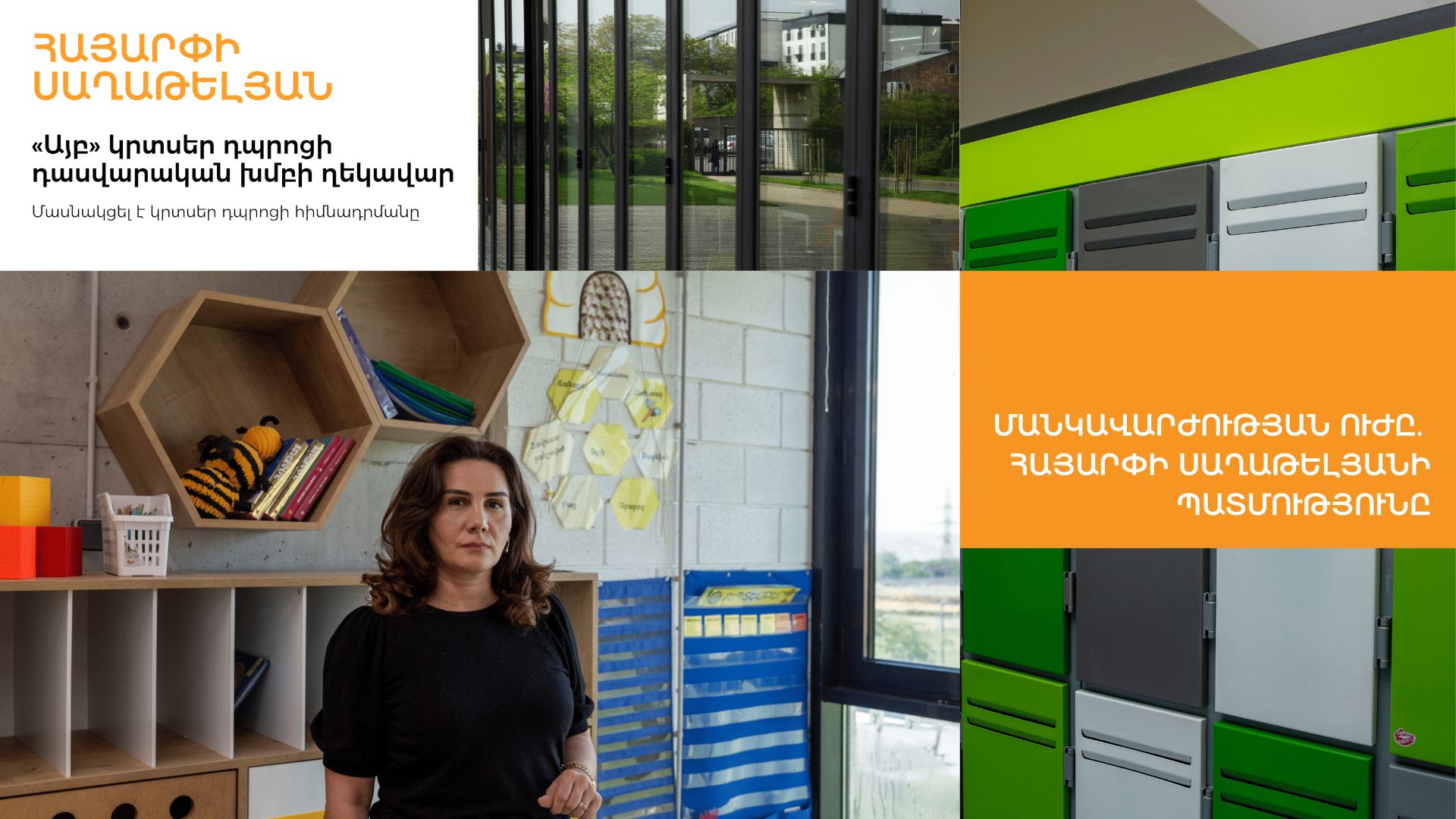The power of pedagogy: The story of Hayarpi Saghatelyan

In the modern education system, the role of schools and teachers is often limited to the function of transmitting knowledge. However, Hayarpi Saghatelyan, Ayb Primary School homeroom teachers’ head, believes that a teacher’s mission goes far beyond just teaching. It is a path where the teacher and the student grow hand in hand together, creating an environment of freedom and self-discovery. In her opinion, this attitude lies at the basis of Ayb, allowing children not only to learn but also to explore the world around them and become the creators of their own success.
The path to the formation of Ayb Primary School
Hayarpi Saghatelyan has been involved in the development of Ayb Primary School since its inception. At the time when Ayb already had a clear mission and goals, the newly opened elementary school (this was the name of the primary school until 2025) joined Ayb's great idea, following the same path. The Ayb Educational Foundation’s programs, vision and goals became the basis for the elementary school activities.
Over the years, a program has been created, a tremendous amount of work has been done and, as a result, an environment has been formed that we can now proudly present.
“Today we have caring playmate teachers and active, curious children who have a great desire to know the world,” Hayarpi says.
Getting to know the child is an everyday research
For Hayarpi, pedagogical work shares similarities with scientific research. She believes that one of the most important tasks of a teacher is to get to know the child. And it is an ongoing process.
“Getting to know the child is the teacher’s daily research. From the very first time a homeroom teacher enters the classroom, a research process begins, by daily analyses on how children react, what interests them, whether they understand or not. The lessons are built on such analyses.”
This approach allows us to view each child as an individual learner. In that case, the child becomes the author of his/her own development and confidently moves forward. Hayarpi explains:
“When the child sees personal growth and enjoys that, it becomes the strongest motivation. And that is our purpose: to create conditions where children can grow independently while we stand by them and rejoice in their successes.”
For a teacher, being an educator means living not only their own life but also the lives of hundreds of children.
“You make their stories in your head, wondering where the seeds you plant today will end up in the future. It is an immense responsibility but also an immense happiness.”
Freedom and play as the basis of learning
Freedom is one of the most important values in an elementary school environment. Freedom for the teacher to experiment, to create, and freedom for the child to ask questions, try, make mistakes, and try again.
Saghatelyan is convinced:
“Freedom is what inspires me. Here, no one limits me or dictates how to teach. I have the freedom to create. And the same freedom is passed on to the children. They feel like they can think and walk on their own.”
Play is also an integral part of the education process.
“It is important to teach through play. Children still live in the world of play. Play is the only language through which knowledge and values can be conveyed to them. The game makes the lesson interesting, and the child begins to trust the teacher.”
Technologies and the power of experience
Today for many people a good school is considered the one with lots of ICT tools. But Hayarpi has her own opinion.
“A good teacher is not the one who knows a lot of apps but the one who understands the learning process of the child. ICT tools can be useful, but in elementary school, visual cues are very important. The child must see, touch, and explore.”
She recalls the episode from a lesson when children touched the hundred board for the first time.
“Of course, you can show on the screen that there are one hundred grains. But when the child touches and feels how the grains move, that experience makes an impression and becomes unforgettable for them.”